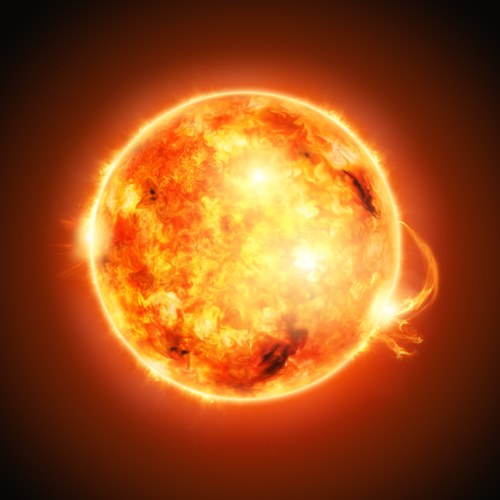Solar Flares and Their Effects
Solar flares are among the most powerful and fascinating phenomena in our solar system. These intense bursts of radiation originate from the Sun and can have significant effects on Earth and its technological systems. Understanding solar flares is crucial for both scientific research and practical applications, as their impacts can range from beautiful auroras to disruptions in communication and power systems.
What Are Solar Flares?
Solar flares are sudden, intense bursts of electromagnetic radiation emanating from the Sun’s surface. They occur when magnetic energy that has built up in the solar atmosphere is suddenly released. This energy release can be so powerful that it emits radiation across the entire electromagnetic spectrum, from radio waves to gamma rays. The most intense solar flares are classified as X-class flares, followed by M-, C-, and B-class flares, with A-class being the smallest.

Causes of Solar Flares
The Sun’s surface is a dynamic and turbulent environment, primarily due to its magnetic field. Magnetic fields are generated by the movement of electrically charged gases within the Sun. These fields can become twisted and tangled due to the Sun’s rotation and convective motions. When the magnetic field lines near sunspots (regions of intense magnetic activity) become too twisted, they can snap and reconnect in a process known as magnetic reconnection. This process releases a tremendous amount of energy, resulting in a solar flare.
Effects on Earth
When solar flares are directed towards Earth, they can have several notable effects:
Geomagnetic Storms: Solar flares can interact with Earth’s magnetosphere, causing geomagnetic storms. These storms can disrupt satellite operations, GPS navigation, and radio communications. In severe cases, they can even affect power grids, leading to widespread outages.Auroras: One of the most visually stunning effects of solar flares is the aurora borealis (northern lights) and aurora australis (southern lights). These occur when charged particles from the Sun collide with Earth’s atmosphere, causing the atmosphere to glow in beautiful colors.Radiation Hazards: Solar flares emit high-energy particles that can pose a risk to astronauts and high-altitude flights. The Earth’s atmosphere and magnetic field provide significant protection, but during intense solar activity, additional precautions may be necessary.Impact on Technology: Solar flares can induce electric currents in power lines, potentially damaging transformers and other electrical infrastructure. They can also affect the accuracy of satellite-based navigation systems and disrupt high-frequency radio communications.
Mitigation and Monitoring
To mitigate the effects of solar flares, scientists continuously monitor solar activity using a variety of space-based and ground-based instruments. Agencies like NASA and the National Oceanic and Atmospheric Administration (NOAA) provide forecasts and warnings of solar storms, allowing for preventive measures to be taken. For example, power companies can temporarily shut down vulnerable systems, and airlines can reroute flights to avoid high-radiation areas.
Conclusion
Solar flares are a testament to the dynamic and powerful nature of our Sun. While they can pose challenges to our technological infrastructure, they also offer opportunities for scientific discovery and awe-inspiring natural displays. By understanding and monitoring solar flares, we can better prepare for their impacts and continue to marvel at the wonders of our solar system.



